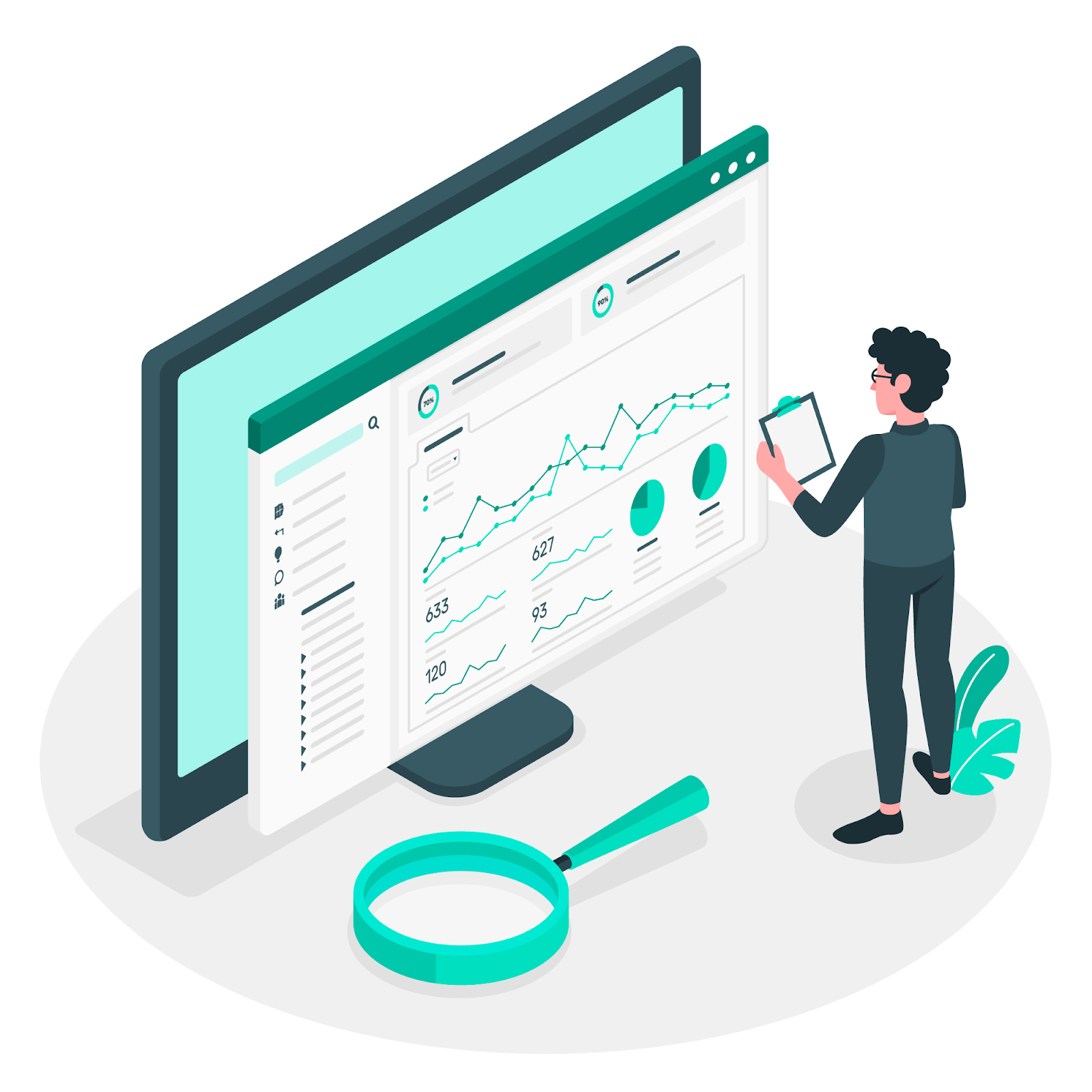Are you looking to optimize your website's performance but unsure if VWO is the right choice? You're in luck! We've compiled...

How to Create a User Engagement Strategy (9 Step Checklist)
An engaged user audience is the best type of audience you can have. They click on your links, interact with your content, sign up for your stuff, and--most importantly--make purchases. Not only do they directly benefit your brand, but their engagement also helps increase brand awareness to other potential customers.
However, keeping users engaged is not as easy as it may seem. An effective user engagement strategy requires a multi-faceted approach involving marketing, product development, web analytics, and more.
In this article, we’ll review everything you need to know about user engagement, the best strategies to improve it, and the tools you need to optimize for it.
What is User Engagement?
Simply put, user engagement is the volume of users actively engaged with your product over a given period.
In a broader sense, user engagement is about making your audience take notice and interact with your brand in a way that encourages them down the conversion funnel.
Why is User Engagement Important?
An effective user engagement strategy is necessary to increase your conversion rate, improving your website’s ability to create relationships with your users. Here are specific reasons why it matters:
1. Building Meaningful Connections
A focused user engagement strategy helps your message connect with your target audience. This connection fosters a sense of community and belonging, making your brand more than just a provider of goods or services but a part of your audience's daily lives.
2. Driving Brand Loyalty
User engagement goes beyond the initial click or follow. It's about creating a series of positive interactions that build trust over time. With every informative article, helpful tutorial, or responsive customer service encounter, you're laying another brick in the foundation of brand loyalty.
3. Enhancing Customer Insights
Engaging with your audience provides valuable feedback and insights into their preferences, behaviors, and pain points. This information will allow you to tailor your offerings, fine-tune your messaging, and innovate to meet your audience's needs more effectively.
4. Improving Conversions and Customer Retention
Engaged users are more likely to convert or perform the desired action, whether purchasing, signing up for your newsletter, or booking a call.
A strong user engagement strategy also keeps your brand top-of-mind, which increases the likelihood of repeat business and reduces churn.
5. Creating a Competitive Advantage
In a competitive market, your user engagement strategy can set you apart. It's an opportunity to showcase your brand's unique voice, values, and commitment to your audience.
While competitors may offer similar products or services, a superior user engagement strategy can make your brand the preferred choice by providing a more rewarding, personalized, and meaningful experience to your users.
9 Metrics Measure User Engagement

Measuring user engagement will help you gauge how effective your current strategies are and determine the quality of the user experience on your website. Key user engagement metrics include:
Page Views and Unique Visitors
These basic metrics provide a snapshot of how many people are visiting your website and how frequently. While page views give you the total number of times your pages are viewed, unique visitors tell you how many distinct visitors have landed on your site within a given period.
Time on Site
The average amount of time users spend on your site is a strong indicator of how engaging your content is. Longer durations (higher website retention rate) suggest that visitors find your offerings compelling enough to stick around.
Bounce Rate
This metric measures the percentage of visitors who leave your site after viewing only one page. A high bounce rate could indicate that your site isn’t meeting the expectations of its visitors or that the user experience is lacking.
Click-Through Rate (CTR)
CTR is the ratio of users who click on a specific link to the number of total users who view a page, email, or advertisement. It helps gauge your calls to action (CTAs) and ads perform well.
Conversion Rate
Perhaps the most crucial metric, the conversion rate, measures the percentage of users who take a desired action, such as purchasing, signing up for a newsletter, or filling out a contact form. This metric directly ties user engagement to your bottom line.
Social Shares and Comments
Engagement on social media platforms can be a valuable indicator of how compelling your content is. High numbers of shares, likes, and comments suggest that your content is resonating with your audience and sparking conversations.
Feedback and Surveys
Direct feedback from users through surveys, feedback forms, and direct communication can provide qualitative insights into user engagement. This feedback can reveal what users like about your site or product and what areas need improvement.
Net Promoter Score (NPS)
NPS is a metric that measures customer experience and predicts business growth. Asking customers how likely they are to recommend your product or service to others can help gauge overall satisfaction and loyalty.
Engagement Rate on Content
For blogs, forums, and other content-driven platforms, measuring the engagement rate (comments, likes, time spent on the page) can help understand how content is performing and what topics are most engaging for your audience.
8 Ways to Improve Your User Engagement Strategy
Improvement is all about iteration. Use data to understand what works and what doesn’t, then tweak your tactics. Here are the best actionable ways you can improve user engagement today:
Tracking User Engagement Metrics
Keep a close eye on customer engagement metrics with a web analytics tool. This will show data on the metrics we've mentioned above.
Optimizing Your Website
Your website is your digital storefront. Make it inviting with a clean design, intuitive navigation, and fast loading times. Remember, a user-friendly website is an engagement-friendly website.
Creating Personalized and Engaging Content
Tailoring content to meet your audience's interests and needs can dramatically boost user engagement levels.
Specific strategies include personalized push notifications, personalized emails, and SEO. SEO helps ensure you're producing content that your target market actually wants to see.
Improving the User Experience
A smooth user experience (UX) is crucial for keeping your audience engaged. Otherwise, you might end up with a high bounce and funnel drop rate. For example, a website that is difficult to navigate will likely frustrate a potential customer and cause them to exit from your site immediately.
Eliminate any UX hurdles that could cause frustration, such as broken links, confusing layouts, or slow response times. Performing UX analysis is a great place to start.
Rewarding Engaged Users
Show your appreciation for engaged users with rewards, be it through exclusive content, discounts, or recognition. This user engagement strategy will help keep existing users engaged and increase the chances of repeat purchases.
Improving the Product Based on Customer Feedback
User feedback is a goldmine of insights for your products and services. Use it to refine your product, making it more in tune with what your customers really want. A pro tip is to use product analysis tools to see what customers like and don't like about your product.
Aside from being a way to perfect your product, leveraging user feedback will show your audience that you are listening to them--another incredible way to retain active users.
Making it Easier for Customers to Give Feedback
Encourage feedback by making the process as easy as pie. Provide multiple channels for feedback and ensure that giving it is as straightforward and hassle-free as possible. For instance, you can use customer feedback tools to integrate feedback options on your website and measure responses easily.
Using an Omnichannel Approach
Your audience is spread across multiple social media platforms. An omnichannel approach helps ensure you are present on these platforms and are offering a seamless and integrated user experience across all of them.
How Does Web Analytics Affect User Engagement?

Web analytics dives deep into the nuances of user behavior, preferences, and engagement patterns, offering a treasure trove of data that can transform your engagement strategy from guesswork into a precise, targeted effort.
Here's a closer look at how web analytics profoundly impacts user engagement:
-
Understanding User Behavior: To improve your user engagement strategy, you must understand how users interact with your website or platform. Web analytics provides detailed insights into user actions, allowing you to spot potential frustration points.
-
Identifying Preferences and Interests: Analytics tools can segment your audience based on various criteria, including demographic details, browsing behavior, and purchase history. This segmentation allows you to tailor your content and marketing efforts to match the preferences and interests of different user groups.
-
Highlighting Engagement Patterns: By analyzing trends over time, web analytics can highlight patterns in user engagement. These insights enable you to optimize your content strategy to align with when your audience is most receptive.
-
Optimizing User Experience: Web analytics tools often include heatmaps, scroll maps, and other features that show how users interact with your site's interface. This data is invaluable for UX optimization, as it can reveal which elements are attracting the most attention and which are being ignored.
-
Improving Personalization: By understanding individual user behaviors and preferences, you can personalize content, recommendations, and offers to meet their specific needs and interests.
-
Measuring and Improving ROI: Web analytics enables you to measure the effectiveness of your user engagement strategies in real terms, such as increased time on site, higher conversion rates, and improved customer retention.
-
Better Decision Making: With real-time analytics, you can monitor user engagement as it happens, allowing you to be more agile and proactive in your decision-making.
-
Predicting Future Trends: Advanced analytics and predictive modeling can help you anticipate future trends in user behavior and engagement.
How to Improve Your User Engagement With FullSession
Use analytics to identify trends, track progress, and pinpoint areas for improvement. Tools like FullSession offer in-depth analytics that can help refine your engagement strategy for maximum impact.
Here are specific FullSession tools that can help you optimize your customer engagement strategy:
-
Interactive heat maps: A website heat map shows you which items on your website are most effective and which ones you need to improve.
-
Customer feedback tools: FullSession makes it easy to collect feedback from both new and active users.
-
Market segmentation and filtering: FullSession allows you to easily segment and filter users based on different information, such as demographics.
-
Session recordings: Optimizing the user experience is a crucial part of any user engagement strategy. That's why FullSession offers session recordings to record how your users interact with your website.
FullSession Pricing Plans

Here are more details on each plan.
- The Starter plan costs $39/month or $32/year and allows you to monitor up to 5,000 monthly sessions with up to 6 months of data storage.
- The Business plan costs $75/month or $60/year and helps you to track and analyze up to 100,000 monthly sessions with up to 12 months of data storage.
- The Enterprise plan has custom pricing and offers customizable sessions plus full access to all features.
Install Your First Heatmap Today
It takes less than 5 minutes to set up your first website heatmap with FullSession, and it's completely free!
FAQs About User Engagement
What is user engagement and its importance?
User engagement measures how actively involved your audience is with your brand, crucial for converting visitors into loyal customers and advocates. High engagement leads to better brand loyalty, increased word-of-mouth promotion, and higher conversion rates.
How do I measure user engagement?
Measure user engagement through critical metrics like page views, time spent on site, bounce rate, click-through rates, conversion rates, and social media interactions. Tools like FullSession offer analytics to track these metrics, providing insights into user behavior and interaction patterns.
What are some tactics to boost user engagement?
Enhance user engagement by optimizing your website for a better user experience, personalizing content, rewarding active users, incorporating customer feedback into product improvements, and facilitating accessible feedback channels.




